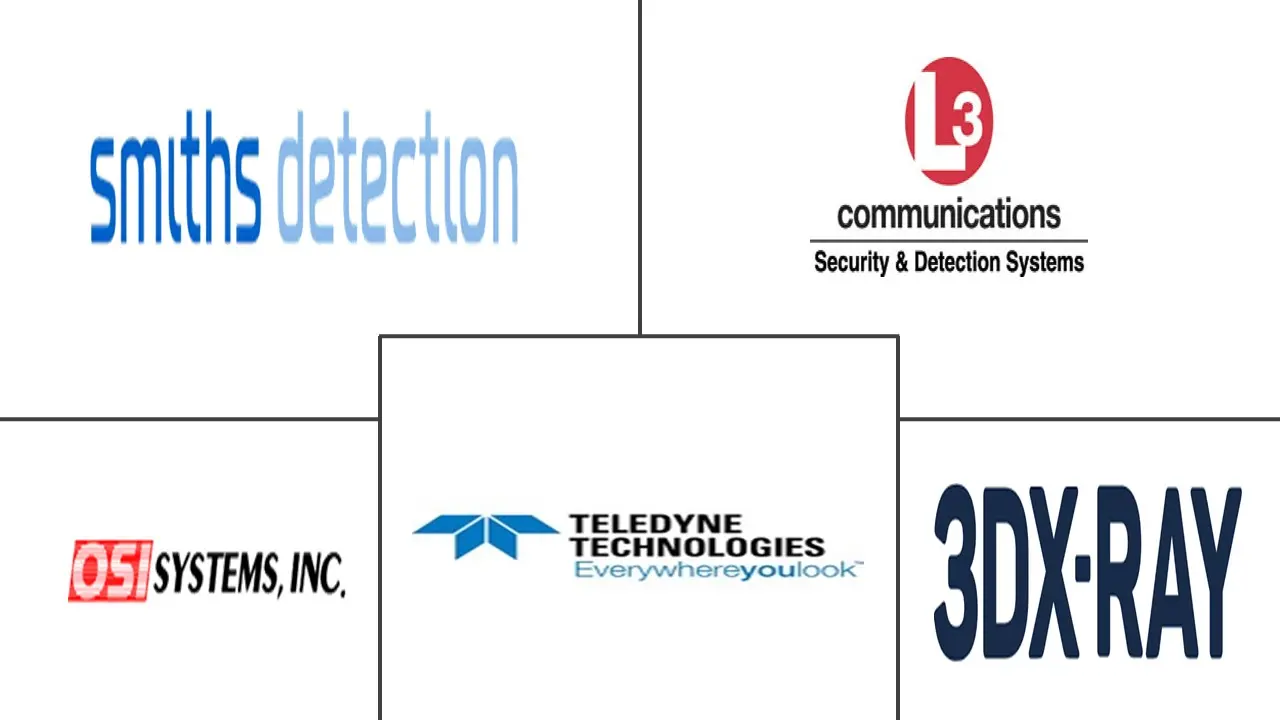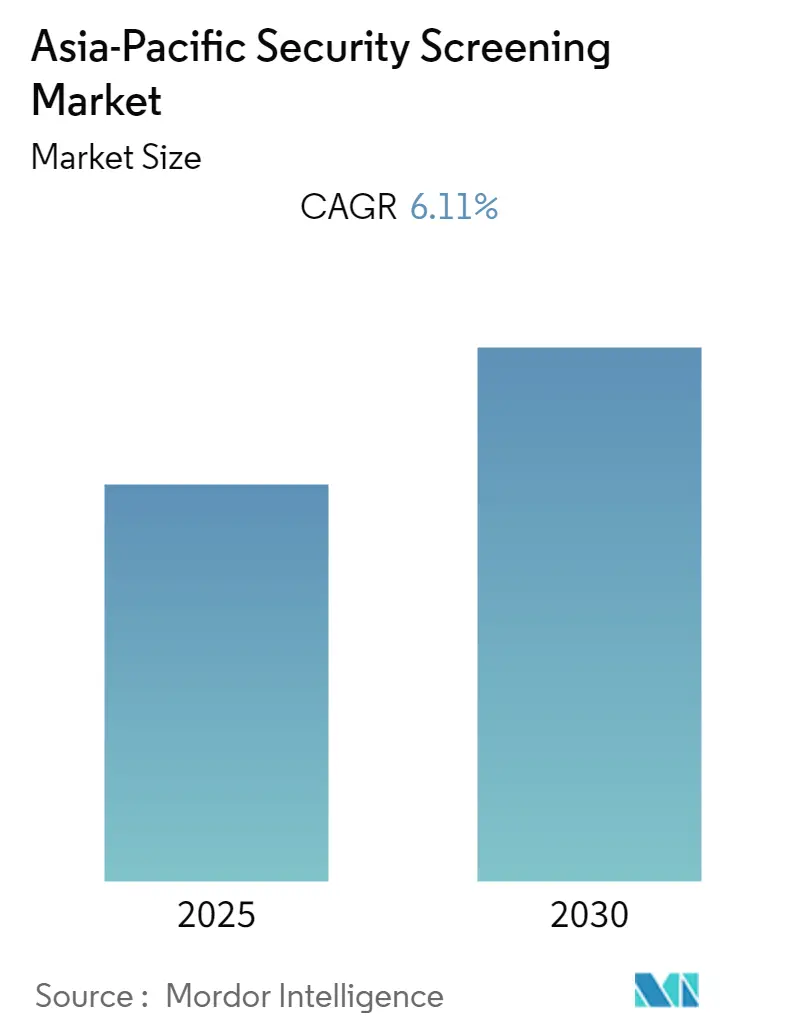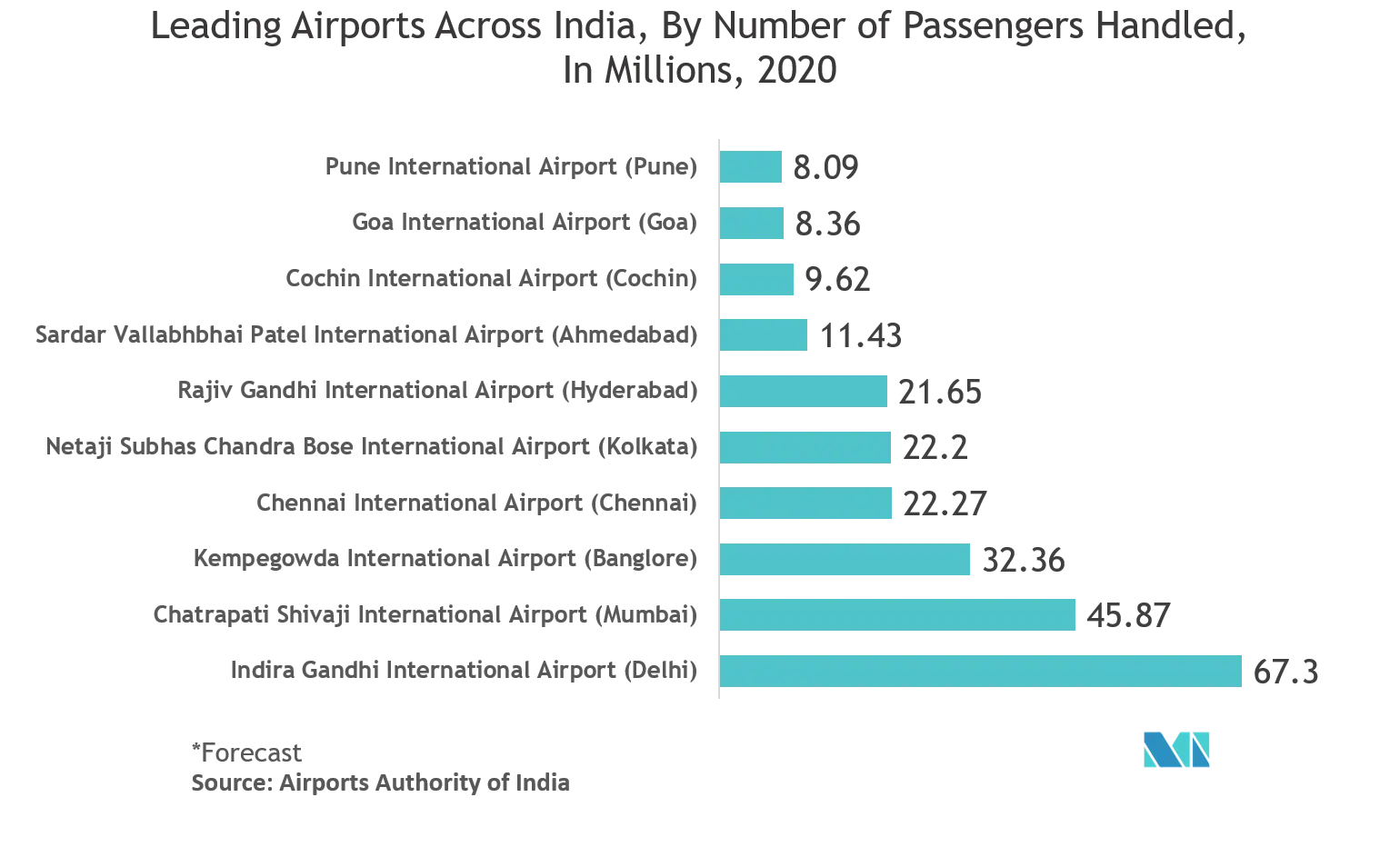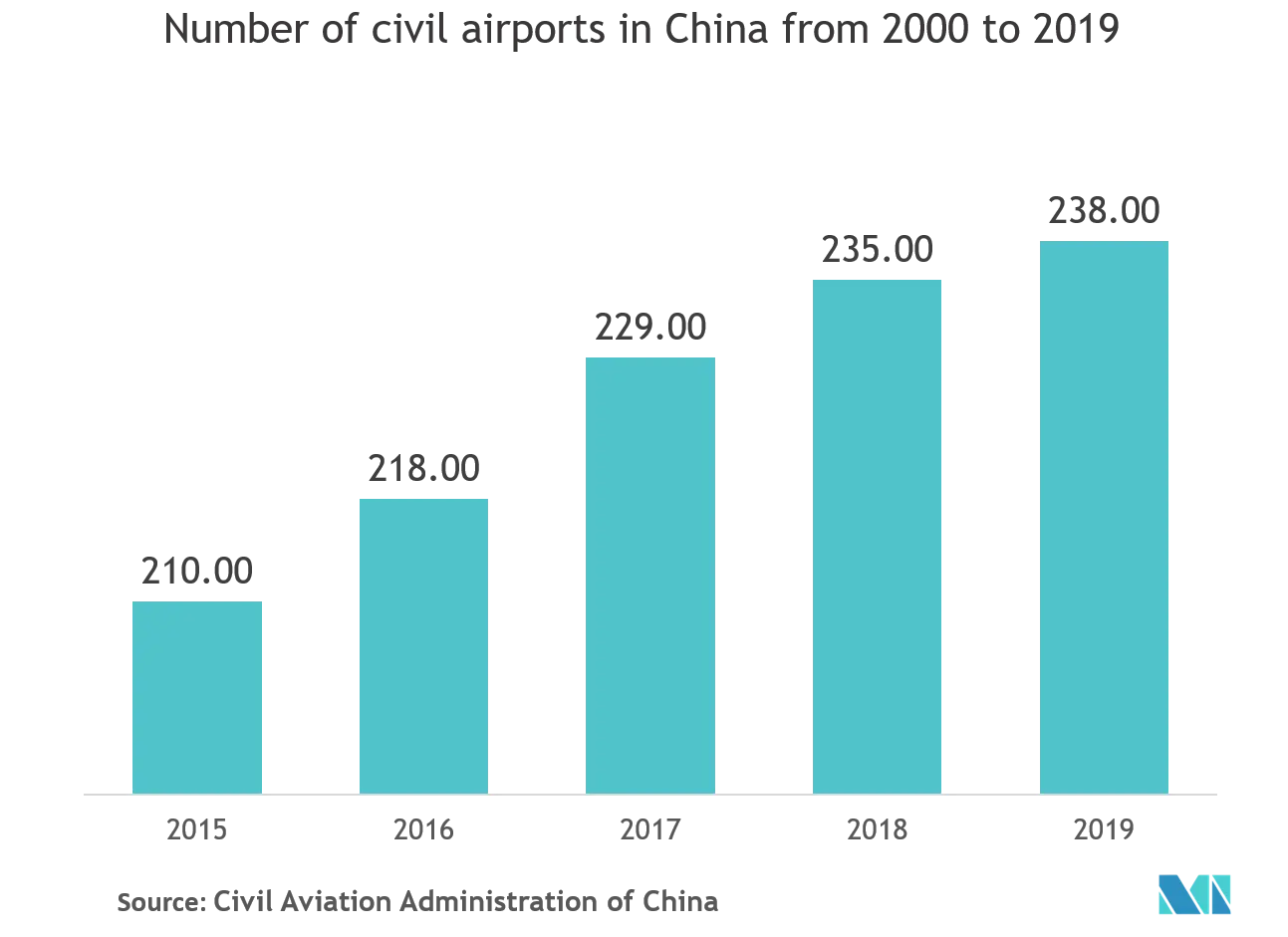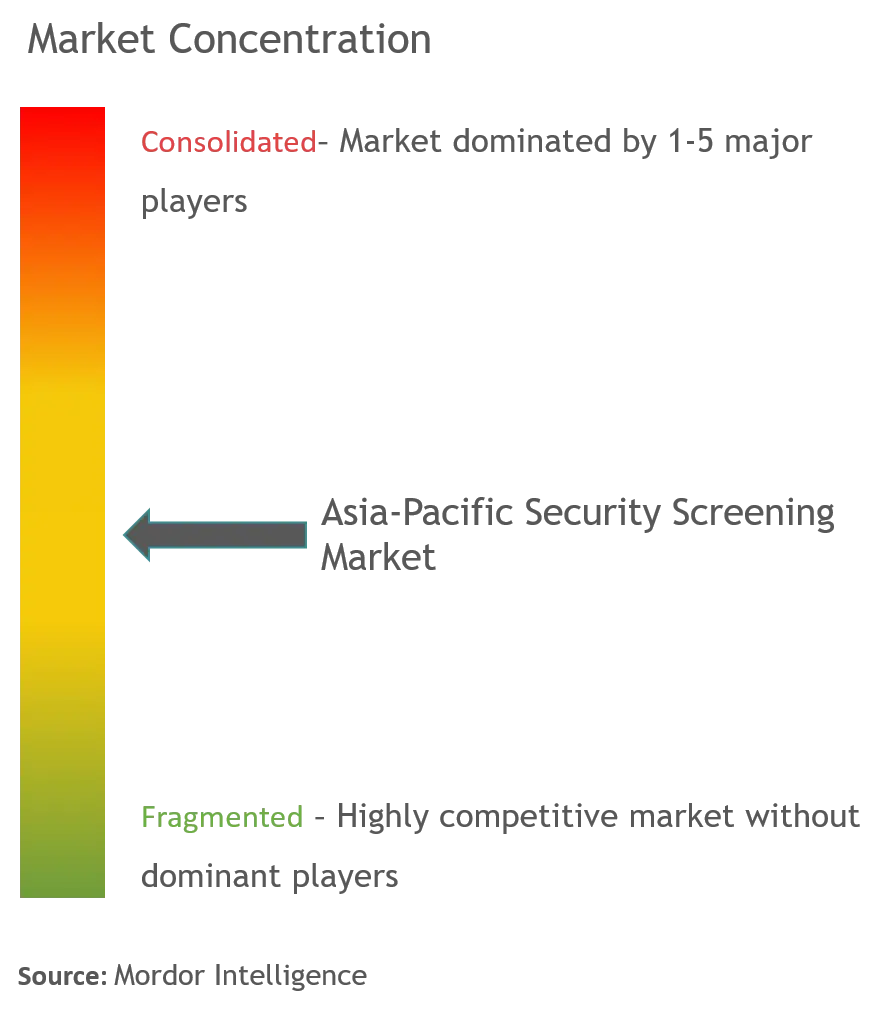APAC Security Screening Market Analysis
The Asia-Pacific Security Screening Market is expected to register a CAGR of 6.11% during the forecast period.
- Furthermore, biometric identification technology was integrated into security efforts to improve the efficiency of security screening and verification, risk prevention in public areas of terminals, checking in of passengers, and fast customs pass using face recognition. This is expected to boost the market studied, over the forecast period.
- Many market players from the country are expanding their portfolios and driving major revenues. For instance, Nuctech, a Chinese firm, sold EUR 130 million of equipment and services to tax authorities, airport security services, and several other public authorities from 2014 to 2019. The company landed 58 contracts with ministries, border and customs authorities, police departments, and other government organizations in 22 of the 28 EU member countries in the past six years. Its screening and scanning equipment were installed in airports across Florence, Italy, and Luton, United Kingdom.
- Also, India is one of the major aviation markets in the world, with an impressive growth rate in passenger traffic, which is expected to triple in the next 20 years to 500 million passenger trips per annum. More than 34 new airports were inaugurated in the past two years, totaling 449 airports overall.
- Further, the effect of the COVID-19 pandemic on the economies of the countries in the region is anticipated to restrict the growth of the market studied, for a year. The COVID-19 pandemic forced lockdowns across Asia over February and March, paralyzing economic activities across the continent as factories were shut, bringing manufacturing to a halt. Factory activities also declined sharply across most of Japan, as the COVID-19 pandemic hit the economic activities across the world, with sharp falls in the import-export business in Japan and South Korea overshadowing a modest improvement in China.
APAC Security Screening Market Trends
Airports are expected to Hold SIgnificant Share
- The global aviation industry is observing a significant influx of passengers, and commercial air traffic is on the rise, owing to which airports are increasingly adopting innovative security screening solutions. According to IATA, the revenue of commercial airlines, globally, stood at USD 812 billion in 2018, and it is expected to reach USD 872 billion by 2020.
- In addition, airports are increasingly adopting screening technologies to speed up the boarding process and reduce travel and transport time consumed, without compromising on security. For instance, the Indian government directed 84 airports across the country to install body scanners by March 2020, which may replace the existing door frame metal detectors and handheld scanners.
- Moreover, the government has initiated several major infrastructure projects, including new mega ports, airports, and metro systems, and the development of multiple smart cities across the country. The rapid growth in the hospitality sector, residential and commercial structures, railways, and roadways, coupled with a greater presence of multinational companies (MNCs), has been the primary factor driving the market demand for security screening. In January 2019, the Ministry of Civil Aviation (MoCA) in its 'Vision 2040 for the Civil Aviation Industry in India' report stated that 80-90 new airports are likely to be developed in India under the 'NextGen Airports for Bharat (NABH) Nirman' scheme within the next 20 years. This involves the deployment of certain critical infrastructures throughout the forecast period.
- Furthermore, there is a threat of terrorist attacks, due to which security standards are set by international authorities, including IATA, ICAO, and ACI. This has resulted in the increased adoption of screening systems at airports. For instance, Smiths Detection, a provider of threat detection systems, supplies innovative solutions for screening and search functions in Tokyo’s Narita International Airport. Narita installed 13 of Smiths Detection’s Eqo portals, following a national directive from the Japan Civil Aviation Bureau (JCAB), to upgrade check-point security.
China to Witness Significant Growth
- China is a major hub for air travel, globally, with almost 238 civil airports in the country in 2019. According to the 13th Five Year Plan (2016-2020) of the Civil Aviation Administration of China (CAAC), the country is anticipated to continue new airport construction, including the Beijing Daxing International Airport, which is one of the significant airports under construction and part of its 44 new airport construction projects, and Chengdu Tianfu Airport, which may be the second-largest new airport project in China.
- This gives several companies a market opportunity to sell their airport security equipment and services. Previously, most infrastructures in China conducted its inspection operations in-house. However, with the increasing acceptance of the China Compulsory Certification (CCC), greater emphasis is being placed on the need for strict regulatory standards, which has led to an increase in outsourcing activities in China, due to cost benefits. This increasing trend of outsourcing is expected to further fuel the market over the forecast period.
- According to the Civil Aviation Administration, airports in China are further planning to adopt technologies, such as millimetre-wave imaging, which can make it faster for passengers to pass through airport security. Security scanners can detect objects hidden under clothing, including non-metallic objects, and can show their shape, size, and position.
- Adding to the scenario, in November 2019, Smiths Detection announced its partnership with Chengdu Shuangliu International Airport to trial its smart security checkpoint for the first time in China.
- The company provides an integrated system that combines advanced X-ray inspection screening and an automated tray return system. The smart security checkpoint provides heightened security, alongside smoother passenger experience and improved operational efficiency.
APAC Security Screening Industry Overview
Market incumbents and large players have a strong influence on the market, in terms of R&D and consolidation activities. Moreover, there is a considerable threat to large players from the new entrants with high product differentiation. Thus, they monitor the market closely and keep framing new strategies for expansion. Although certain techniques like X-rays have been in the market for a long time, newer methods (millimeter-wave) for screening have come up. While the former has high penetration in advanced applications, the latter is gaining traction. Developments dependent on technologies like AI, facial recognition, and machine learning are fulfilled by newer entrants.
- May 2020 - Leidos completed the acquisition of L3Harris Technologies' Security Detection and Automation Businesses, creating a comprehensive, global security and detection portfolio. The acquired businesses provide airport and critical infrastructure screening products, automated tray return systems, and other industrial automation products.
- April 2020 - In order to contain the COVID-19 spread, the Nutech Company Ltd. launched its non-contact human body security detector approved by China Civil Aviation Administration with an A-Class License.
APAC Security Screening Market Leaders
-
Smiths Detection Inc.
-
L-3 Security and Detection Systems Inc.
-
OSI Systems Inc.
-
3DX-Ray Ltd (Image Scan Holdings PLC)
-
Teledyne ICM SA
- *Disclaimer: Major Players sorted in no particular order
APAC Security Screening Industry Segmentation
Security screening allows individuals to access classified information or restricted areas, by thorough frisking and background check. Metal detectors and X-ray scans are some of the techniques through which security scanning is being performed in the market. Strict security regulations across the aviation security market, rising terrorist activities, and an increase in drug, weapon, and human trafficking are driving the sophistication of security screening. The market also underlines the inclusion of hardware/equipment, integrated software, and allied services. The vendors considered for the study include pure-play vendors who overlook the manufacturing and delivery of security-based screening offerings while excluding the third-party vendors. The wide use of security screening can be seen in airports, ports and borders, defense, and critical infrastructure, to name a few. The report additionally, provides a geographical analysis of the same. The current demand is expected to take a hit owing to the COVID-19 pandemic resulting in the lockdown of the impacted nation. The impact of COVID-19 on the market has been considered in the scope of the study while arriving at estimation in the context of study.
| Application | People | ||
| Product | Mail and Parcel | ||
| Baggage | |||
| Cargo and Vehicle Inspection | |||
| Trace Detection | |||
| Other Applications | |||
| End User | Airport | ||
| Ports and Borders | |||
| Defense | |||
| Critical Infrastructure | |||
| Other End Users | |||
| Geography | Asia-Pacific | China | |
| India | |||
| Japan | |||
| Rest of Asia-Pacific | |||
APAC Security Screening Market Research FAQs
What is the current Asia-Pacific Security Screening Market size?
The Asia-Pacific Security Screening Market is projected to register a CAGR of 6.11% during the forecast period (2025-2030)
Who are the key players in Asia-Pacific Security Screening Market?
Smiths Detection Inc., L-3 Security and Detection Systems Inc., OSI Systems Inc., 3DX-Ray Ltd (Image Scan Holdings PLC) and Teledyne ICM SA are the major companies operating in the Asia-Pacific Security Screening Market.
What years does this Asia-Pacific Security Screening Market cover?
The report covers the Asia-Pacific Security Screening Market historical market size for years: 2019, 2020, 2021, 2022, 2023 and 2024. The report also forecasts the Asia-Pacific Security Screening Market size for years: 2025, 2026, 2027, 2028, 2029 and 2030.
Our Best Selling Reports
Asia-Pacific Security Screening Industry Report
Statistics for the 2025 Asia-Pacific Security Screening market share, size and revenue growth rate, created by Mordor Intelligence™ Industry Reports. Asia-Pacific Security Screening analysis includes a market forecast outlook for 2025 to 2030 and historical overview. Get a sample of this industry analysis as a free report PDF download.

